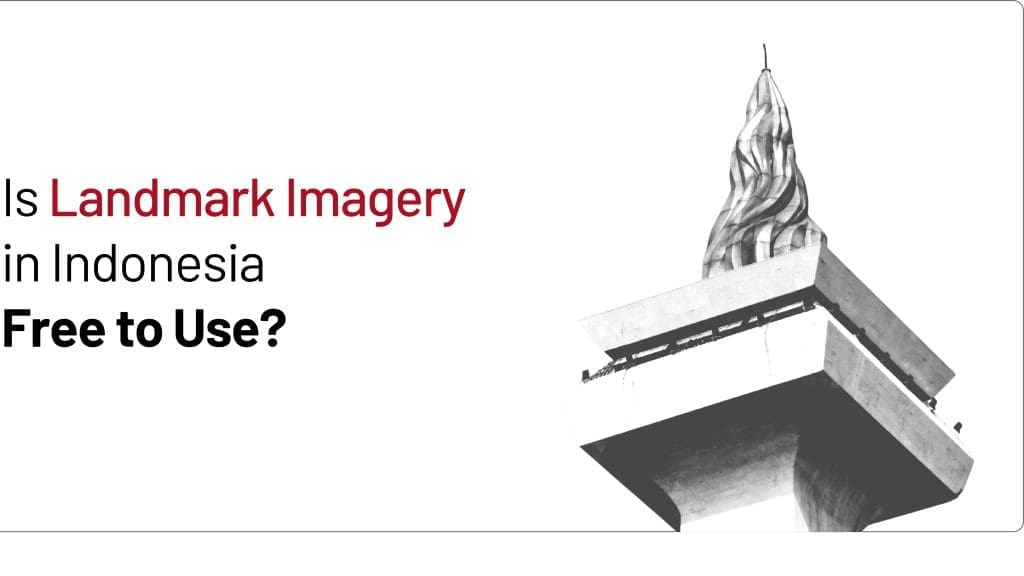Landmarks and IP: Using Iconic Imagery in Indonesia
Using images of famous Indonesian landmarks in commercial designs – whether on merchandise, branding, or advertising, can cause copyright and cultural heritage issues. Here, we’ll be exploring how the Indonesian law addresses landmark imagery and why it matters to businesses.
Why Landmark Imagery Could Be Risky
From Jakarta’s Monas to Bali’s temples, landmarks evoke national pride, cultural identity, and a strong visual impact. But in Indonesia, we can’t just “simply” use these images commercially. Landmark designs are protected under copyright law, and cultural heritage regulations add another layer of complexity.
Copyright and Cultural Heritage in Indonesia
Under Indonesia’s Copyright Law (Law No. 28 of 2014), architectural works, monuments, sculptures, and artistic designs are protected as “ciptaan” (creations). This means the design of a landmark – such as the silhouette of a monument or the artistic rendering of a statue – is treated like any other copyrighted work. The copyright typically lasts for the creator’s lifetime plus 70 years.
Unlike some jurisdictions, Indonesia doesn’t recognise a broad “freedom of panorama” exception. Public visibility doesn’t equal public domain. Even if a landmark is in a public space, its image can’t be used commercially without permission from the copyright holder.
Cultural heritage laws (Law No. 11 of 2010) also come into play. While these laws don’t grant copyright, they regulate the use and management of heritage sites. For example, Monas is managed by a government unit that may require permission for high-profile commercial use of its image.
Why This Matters to You
If your business uses landmark imagery in branding, packaging, or promotional materials, you could be at risk of copyright infringement. Two recent cases illustrate this:
- Grand Indonesia Mall was fined Rp 1 billion for using a logo resembling the Welcome Monument without permission from the artist’s heirs.
- KFC Indonesia is currently facing a lawsuit for using the same monument’s image on packaging without a licence.
The above cases show that even stylised or silhouette versions of landmark designs can be considered infringing.
Insights and Takeaways
For businesses operating in Indonesia, here’s what you need to do:
|
Check Copyright Status |
Identify the creator of the landmark and the date of creation. If the creator died less than 70 years ago, the work is likely still protected (e.g., Monas’s architect died in 1984, so its design remains protected until at least 2054). |
|
Seek Permission |
Contact the copyright holder (often the creator’s heirs or a government body). Request a licence for commercial use and document the permission to prevent future disputes. |
|
Consult Heritage Authorities |
For heritage sites, contact the managing authority (e.g., UPK Monas), as local regulations may still require a usage permit even if copyright isn’t an issue. |
|
Avoid Assumptions |
Don’t assume public visibility means free use, and don’t rely on stylisation or reinterpretation to bypass copyright. |
|
Monitor Developments |
Indonesia may eventually introduce a freedom of panorama exception. |
|
Be Culturally Sensitive |
Avoid using landmark imagery in ways that could be seen as disrespectful or misleading, and consider moral rights that protect the work’s integrity and attribution. |
Protect with Respect
We’re here to assist you. We specialise in intellectual property law in Indonesia, offering straightforward, efficient, and effective IP services. We’ve advised clients across a broad range of industries on copyright compliance.
- Contact our team for more specific advice.
- Submit a custom inquiry via our Contact Page.
- Follow us on LinkedIn for more IP expertise.





